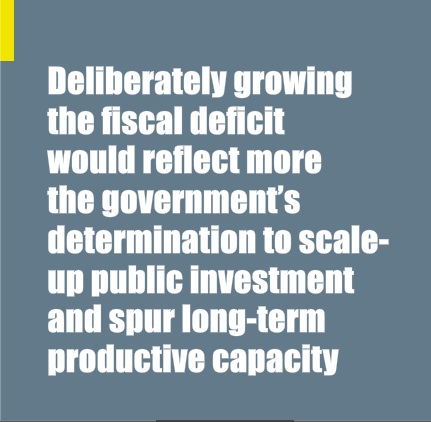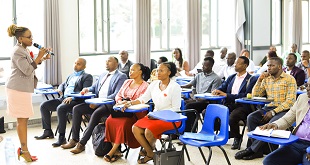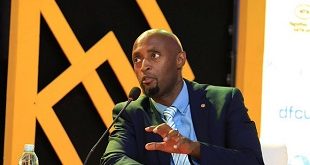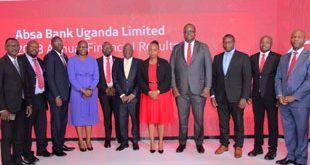
On this front, the government will have a tough time. But if its renewed vigour is successful, the pay-dirt will be rich because the most critical areas (education, water, energy, health, agriculture, and public sector management) are also the worst performers on budget utilisation.
Accounting Officers who do not account in full and in time for funds provided under their respective Ministries, Agencies and Local Governments will be recommended for removal in public interest.
The government also wants the corruption fighting bodies; the Inspectorate of Government, PPDA, Office of the Auditor General, Internal Auditor General’s Office, Director of Public Prosecution (DPP), CID, Financial Intelligence Authority (FIA), Anti-Corruption Court, Office of the Prime Minister, Public Service Commission and the Ministry of Public Service, to work more closely together.
The government will also restructure ministries, departments and local governments to improve performance, and move financial decisions closer to the service delivery units.
For now, however, the die has already been cast.
Compared to regional governments, however, which are attempting to do exactly the same things (invest in infrastructure, create jobs, spur manufacturing), Uganda’s efforts seems “terribly timid”.
On paper, Uganda expects to spend Shs18.4 trillion in 2016/17, which is just about 7% higher that it spent in last financial year.
Compare that to Tanzania which spent Tshs 22.5 trillion last year but has this FY budgeted to spend TShs7 trillion or 31% more this year.
Even Kenya which has to deal with an unprecedented 8.1% budget deficit has expanded its expenditure moderately higher than Uganda from KShs2.1 trillion to Kshs2.3 trillion – which is a rise of about 10%. Rwanda is increasing its expenditure by 8% in 2016/17.
It appears, therefore, that as Uganda attempts its three budget objects of maintaining macro-economic stability, stimulating the economy, and investing in infrastructure to create jobs and improve productivity, the macro-stability is weighing down the other initiatives. The result is slow economic grow and persistent cries on the street of “there is no money”.
According to the budget, the government wants to east the tight squeeze on money supply by increasing public spending. But it appears to be listening more to some experts who fear that an increase in expenditure may not be helpful and could pile up more public debt with minimal return on investment.
This group is busy labeling the 2016/17 budget as “too ambitious”.
It is not clear what those experts would say about the budgets of Tanzania, Kenya and even Rwanda. Uganda’s budget deficit jumped to 6.4% in 2015/16 partly because of a roll-over component of debt arrears. The fiscal deficit was 4.5% in 2014/15 and 3.9% in 2013/14. It is now expected to remain at 6.4% in 2016/17 FY. Deliberately growing the fiscal deficit would reflect more the government’s determination to scale-up public investment and spur long-term productive capacity.
The “budget is ambitious” camp point at how the government is throwing money at the army and police for increased security (Shs1.6 trillion), transport and works (Shs3.8 trillion), infrastructure investments like the Karuma and Isimba Hydro power projects, rehabilitation and expansion of Entebbe Airport, Phase Three of the National Transmission Back Bone Project, compensation for land for the construction of the Malaba – Kampala Eastern Standard Gauge Railway, and oil and gas development. Money has also been thrown at increasing salaries for primary teachers, increasing salaries of teaching and non-teaching staff in public universities, recruitment of tutors for the 20 technical institutes, operationalising three more public universities in Soroti, Kabale, and Lira, and expanding the Student Loan Scheme.
Agriculture will get an extra Shs343.46 billion, which is a 65% increase compared to last year, and raises its total to Shs823.42 billion or about 5% of the budget. Together with funding to rural development interventions (rural electrification and feeder roads) they get about Shs1, 985 billion or 9.6% of the non-debt, non-discretionary budget. Tourism will get Shs188.8 billion up from Shs158.5 billion in Financial Year 2015/16. But the amount of money being spent on these entities and projects is not enough – as the unending supplementary budget partly show.
Unless drastic measures are taken, the expected returns might not be realized. Some that would make a difference to the country’s Balance of Payments position include increased coffee production; from 3.6 million bags today to 20 million bags by 2020, tea to rise to 135,000 metric tonnes, rice 680,000 metric tonnes, and increased milk and fish exports. In the social service arena, some targets could potentially transform lives. These include the targeted increase in access to safe water to 79% in rural areas and reach 100% coverage in urban areas, and construction of 33 town water supply schemes and 147 sewerage and sanitation facilities (public and household) in various towns.
 The Independent Uganda: You get the Truth we Pay the Price
The Independent Uganda: You get the Truth we Pay the Price


